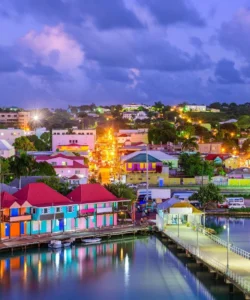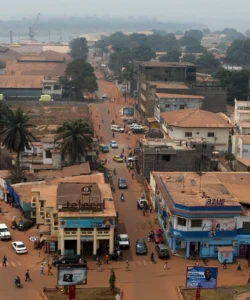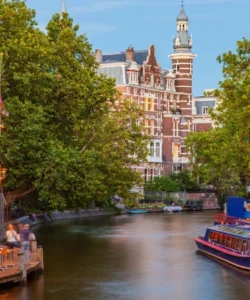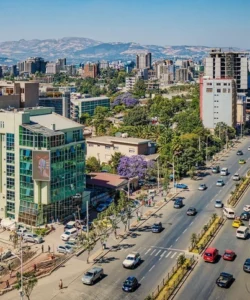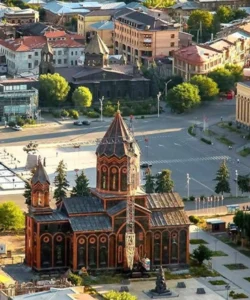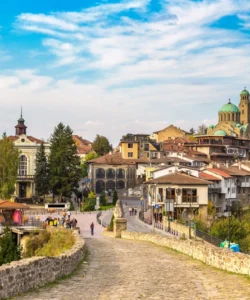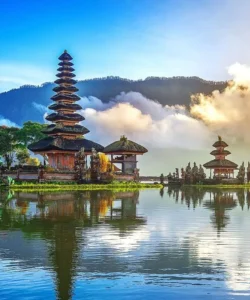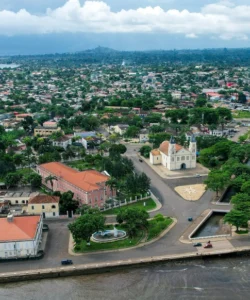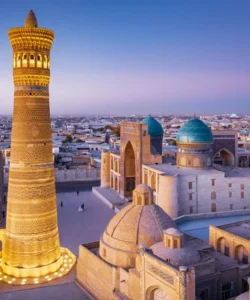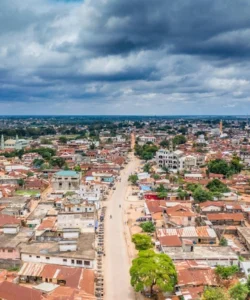Costa Rica is a rugged, rainforested Central American country with coastlines on the Caribbean and Pacific. It’s world-renowned for its progressive environmental policies, incredible biodiversity, and “Pura Vida” lifestyle, making it a prime destination for eco-tourism and adventure travel.
Area and Population:
Costa Rica covers an area of approximately 51,100 km² (19,730 sq mi), plus 589,000 km² of territorial waters. Its population is estimated to be around 5.3 million inhabitants (as of 2024).
Language:
The official language of Costa Rica is Spanish. English is widely spoken in tourist areas and by many professionals. Indigenous languages are spoken by various indigenous communities, though less commonly encountered by tourists.
Currency:
The currency of Costa Rica is the Costa Rican Colón (CRC). U.S. dollars are also widely accepted in tourist areas, and credit cards are commonly used.
Religion:
The predominant religion in Costa Rica is Catholicism, accounting for the majority of the population. Protestantism, particularly Evangelical denominations, has a significant and growing presence. There are also smaller percentages of other faiths and non-religious individuals.
Capital:
The capital city of Costa Rica is San José, located in the Central Valley. It is the country’s largest city and its political, economic, and cultural center.
Major Cities:
Besides San José, other significant cities and towns in Costa Rica include:
- Alajuela: Home to the Juan Santamaría International Airport (SJO) and close to Poás Volcano.
- Heredia: Known for its coffee plantations and colonial architecture.
- Cartago: The former colonial capital, home to the Basilica de Nuestra Señora de los Ángeles.
- Liberia: A gateway city to the beaches of Guanacaste and the dry forest region in the northwest.
- Puntarenas: A port city on the Pacific coast.
- Limón: A major port city on the Caribbean coast, known for its Afro-Caribbean culture.
- La Fortuna / Arenal: A popular tourist town, gateway to Arenal Volcano and adventure activities.
- Manuel Antonio: A popular beach and national park destination on the Pacific coast.
Attractions and Wonders:
Costa Rica’s main draws are its breathtaking natural beauty and diverse ecosystems.
- Volcanoes:
- Arenal Volcano: A majestic, cone-shaped volcano (currently dormant for eruptions but with geothermal activity) near La Fortuna, surrounded by hot springs, rainforest, and adventure activities.
- Poás Volcano National Park: Famous for its stunning, often steaming, acidic crater lake (currently open with restricted access due to volcanic activity).
- Irazú Volcano National Park: Costa Rica’s highest volcano, offering panoramic views and sometimes a green crater lake.
- Tenorio Volcano National Park (Río Celeste): Known for the Celeste River, whose waters turn brilliant turquoise due to a natural chemical reaction.
- National Parks and Wildlife: Costa Rica has an extensive system of protected areas, covering over 25% of its land.
- Manuel Antonio National Park: A stunning combination of white-sand beaches, lush rainforest, and abundant wildlife (monkeys, sloths, iguanas).
- Monteverde Cloud Forest Biological Preserve: A famous cloud forest reserve known for its incredible biodiversity, hanging bridges, zip-lining, and unique ecosystems.
- Corcovado National Park (Osa Peninsula): One of the most biodiverse places on Earth, home to jaguars, tapirs, monkeys, and incredible birdlife, often requiring guided tours.
- Tortuguero National Park: Accessible by boat, famous for its nesting sea turtles (especially Green Sea Turtles), canals, and rich wildlife.
- Cahuita National Park: On the Caribbean coast, known for its coral reef, white-sand beaches, and abundant wildlife visible from walking trails.
- Beaches: Both Pacific and Caribbean coasts offer diverse beach experiences:
- Pacific Coast: Guanacaste (Tamarindo, Conchal, Nosara for surfing), Nicoya Peninsula (Santa Teresa, Mal País), Manuel Antonio, Dominical, Uvita (Whale’s Tail beach).
- Caribbean Coast: Puerto Viejo de Talamanca, Cahuita, Tortuguero.
- Adventure Activities: Zip-lining, white-water rafting (Pacuare River), surfing, canyoning, rappelling, horseback riding, and waterfall rappelling are popular.
- San José: Explore the Gold Museum (Museo del Oro Precolombino), National Theatre, and bustling central market.
Architecture:
Costa Rican architecture is generally more functional than grand, adapted to the climate and seismic activity.
- Spanish Colonial Influence: Evident in older churches and some buildings in cities like Cartago and parts of San José, but often more modest due to less colonial wealth compared to other Latin American countries.
- Victorian and Neoclassical: The National Theatre in San José is a prime example of late 19th-century neoclassical architecture.
- Rural and Traditional: Simple wooden houses with verandas are common in rural areas and small towns.
- Eco-Friendly Design: Many newer hotels and lodges, especially in eco-tourism areas, incorporate sustainable building practices and blend with the natural environment.
Roads:
Costa Rica’s road infrastructure is a mix. Major highways connecting San José to larger cities and popular tourist destinations are generally paved and in decent condition. However, many roads, especially those leading to national parks, remote beaches, or cloud forest reserves, can be unpaved, bumpy, and require a 4×4 vehicle, particularly during the rainy season. Driving conditions can be challenging, but significant improvements have been made in recent years. Public bus service is extensive and affordable, connecting most parts of the country.
Hotels:
Costa Rica offers a vast array of accommodation options, from luxury resorts and boutique hotels to charming eco-lodges, mid-range hotels, and budget-friendly hostels and guesthouses. The choices are particularly abundant in popular tourist areas like La Fortuna, Manuel Antonio, Monteverde, and the Guanacaste beaches. Eco-lodges are a highlight, providing immersive experiences in nature.
Restaurants and Cuisine:
Costa Rican cuisine, known as “comida típica” (typical food), is generally healthy, fresh, and flavorful, though not typically spicy. It’s based on rice, beans, fresh vegetables, fruits, and meat.
- Key Dishes:
- Gallo Pinto: The national dish, a flavorful mix of rice and black beans, often served for breakfast with eggs, sour cream, and fried plantains.
- Casado: A traditional plate (literally “married man’s meal”) served for lunch, consisting of rice, black beans, a protein (grilled fish, chicken, or beef), salad, and usually fried plantains.
- Arroz con Pollo/Camarones: Rice with chicken or shrimp, a popular and common dish.
- Sopa Negra: Black bean soup, often served with a hard-boiled egg.
- Ceviche: Fresh fish (or seafood) marinated in lime juice with cilantro, onion, and bell peppers.
- Patacones (Tostones): Thick, twice-fried green plantain slices, often served with a dip.
- Tamales: Steamed corn dough filled with meat and vegetables, wrapped in plantain leaves (especially popular during holidays).
- Fresh Fruit and Juices: An abundance of tropical fruits like mango, pineapple, papaya, passion fruit, and various bananas.
- Costa Rican Coffee: World-renowned for its high quality.
- Restaurants: “Sodas” are traditional Costa Rican eateries offering affordable and authentic local dishes. In tourist areas, you’ll find a wider range of restaurants, including international cuisine and upscale options. The culinary scene often emphasizes farm-to-table concepts, especially in eco-lodges.

